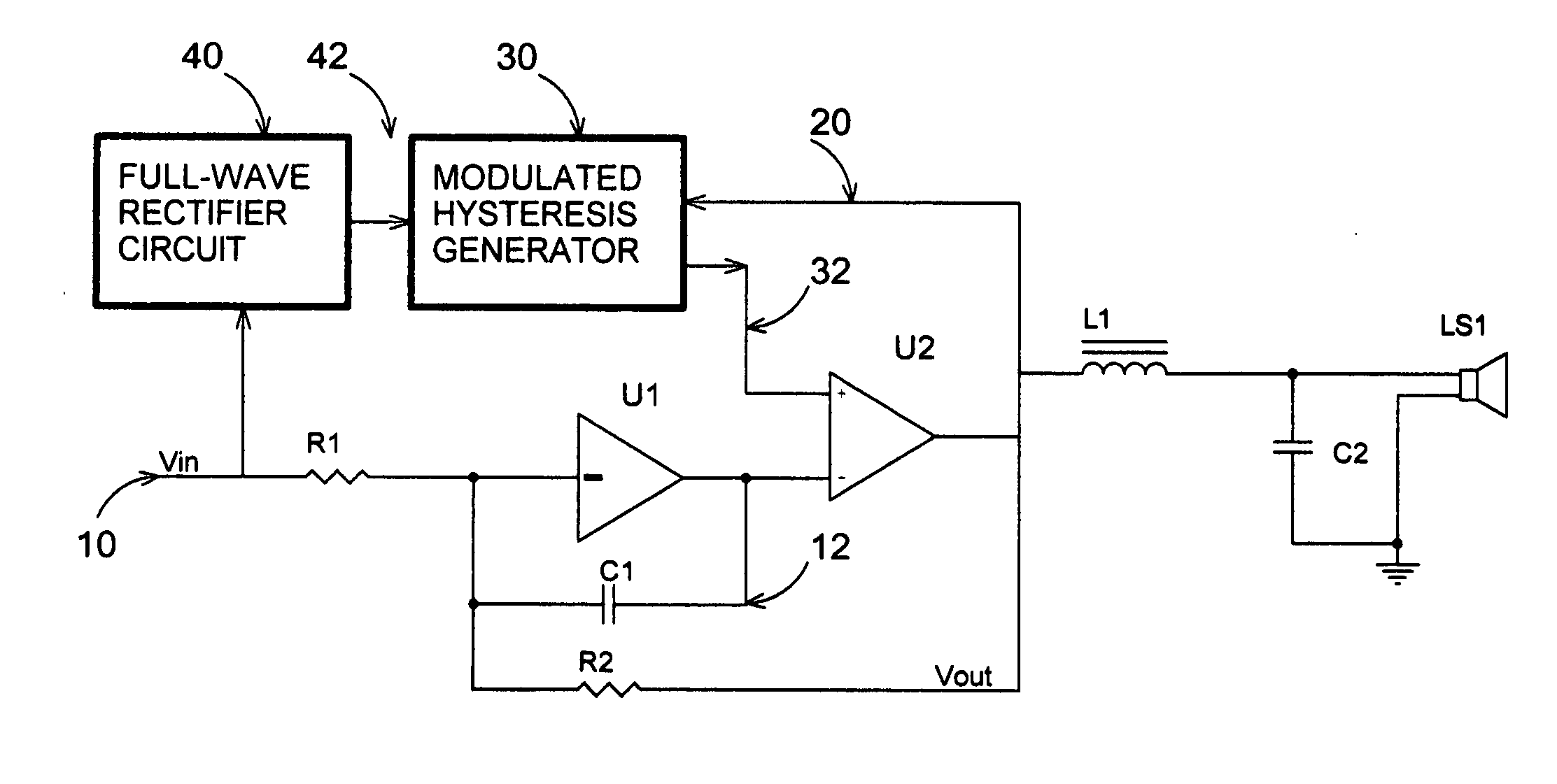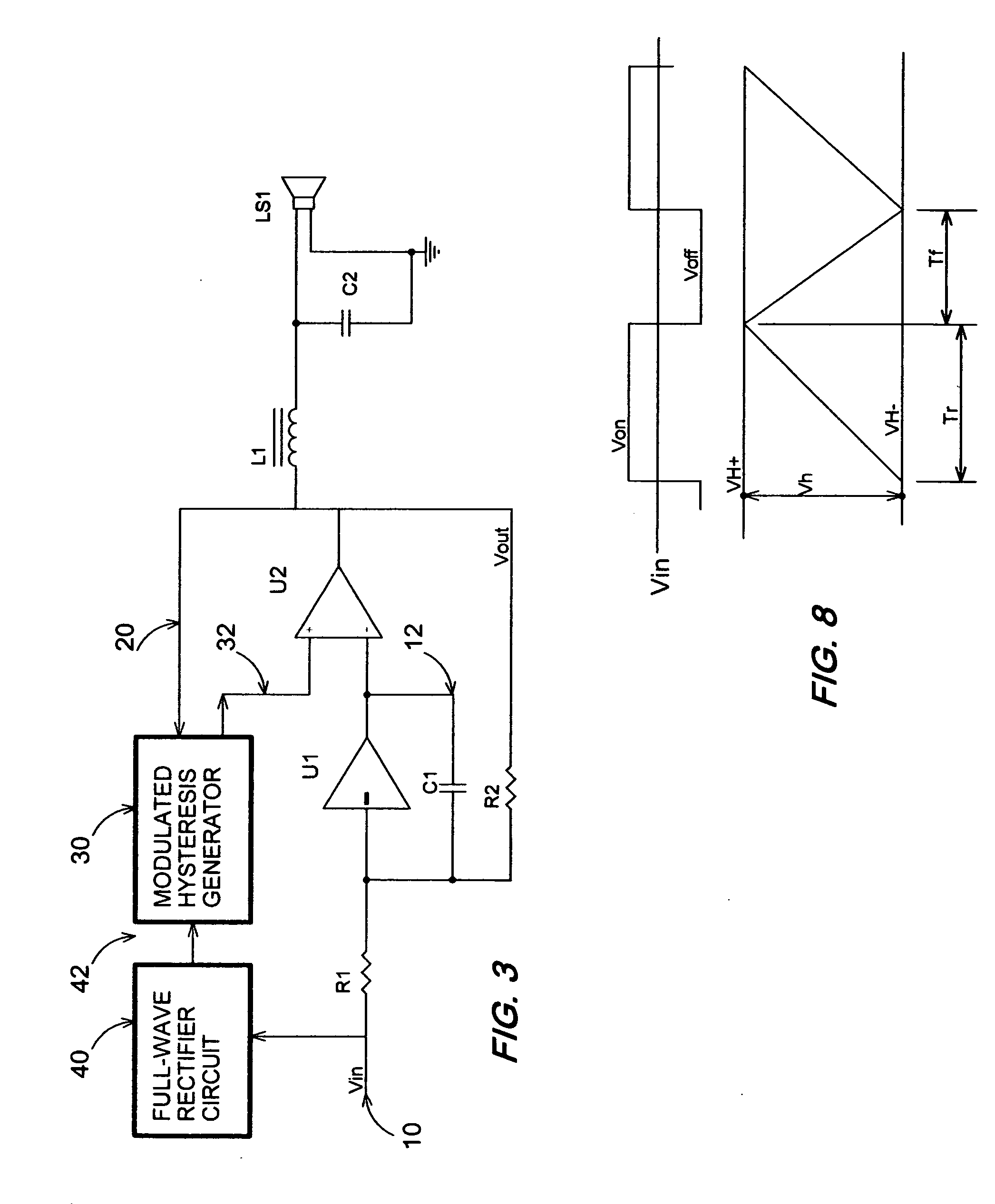Constant frequency self-oscillating amplifier
a constant frequency, self-oscillating technology, applied in amplifiers, amplifiers with semiconductor devices/discharge tubes, electrical devices, etc., can solve the problems of distorted output signal, low overall efficiency, and low distortion of digital signal processed by such prior art analog delta-sigma modulation. , to achieve the effect of improving overall efficiency and reducing distortion
- Summary
- Abstract
- Description
- Claims
- Application Information
AI Technical Summary
Benefits of technology
Problems solved by technology
Method used
Image
Examples
third embodiment
[0026] In a second and third embodiment, FIGS. 6A-6B, a signal proportional to the speaker voltage 50 or speaker current 60 or a combination thereof is fed into the integrator U1 to compensate for the resistances and any non-linearities of the components of the reconstruction filter L1-C2. Indeed, a choke used in the reconstruction filter may use a magnetic material for smaller size and lower cost, but magnetic materials are non-linear by their nature, and its winding has finite resistance that actually increases with frequency due to the skin and proximity effects. Likewise, a capacitor has its equivalent series resistance (ESR) and series equivalent inductance (ESL) and its capacitance may vary with applied voltage. While these non-linearities are small, they do degrade the total harmonic distortion (THD) of prior art switch-mode amplifiers. The feedback voltage or current or both voltage and current feedback from the speaker also reduces if not eliminates the peaking of the recon...
first embodiment
[0031] In another embodiment, FIG. 7, an additional gain block 70 is added to increase the open loop gain of the CFSOA, where the speaker voltage is fed back and compared to the input signal 10 to generate an error signal 71 that is now used as an input signal to an inner CFSOA of FIG. 3. Of course the transfer function of such an additional gain stage needs to be tailored to maintain the closed loop stability. Techniques for loop stability are well known to the skilled in the art, essentially the design must have loop phase shift less than 360 degrees when the loop gain is unity. Typically the transfer function of the gain block 70 ought to have at least one zero in its transfer function so that it doesn't add substantial phase shift around 0 dB crossing of the open loop gain of the amplifier. The additional loop gain provided by the gain block 70 will further reduce the distortion of the CFSOA and its output impedance by its gain.
[0032] From the description above, a number of adva...
PUM
 Login to View More
Login to View More Abstract
Description
Claims
Application Information
 Login to View More
Login to View More - R&D
- Intellectual Property
- Life Sciences
- Materials
- Tech Scout
- Unparalleled Data Quality
- Higher Quality Content
- 60% Fewer Hallucinations
Browse by: Latest US Patents, China's latest patents, Technical Efficacy Thesaurus, Application Domain, Technology Topic, Popular Technical Reports.
© 2025 PatSnap. All rights reserved.Legal|Privacy policy|Modern Slavery Act Transparency Statement|Sitemap|About US| Contact US: help@patsnap.com



